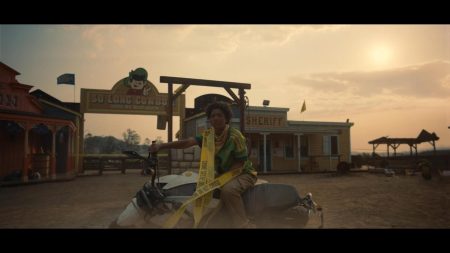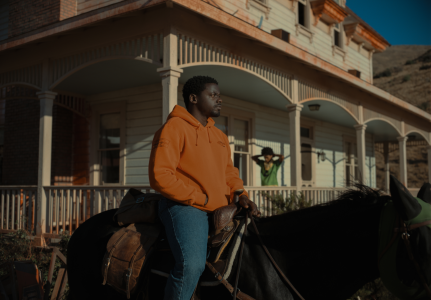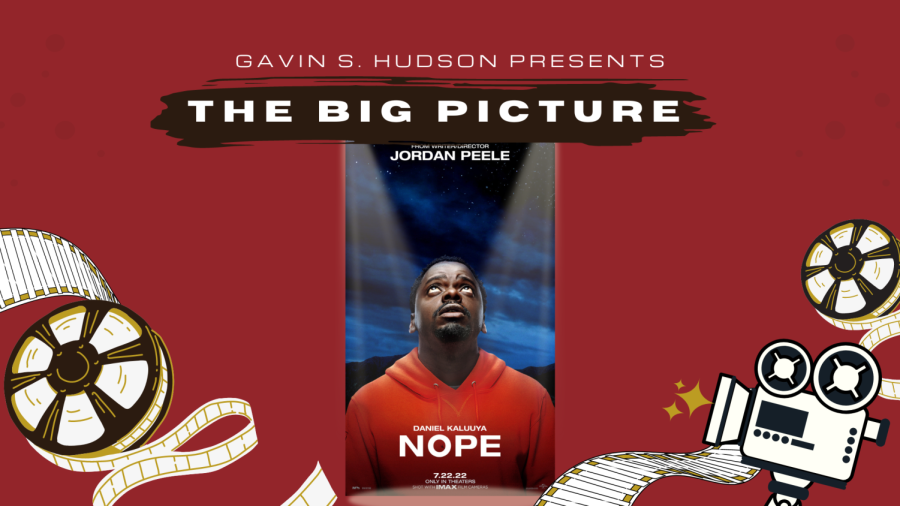The Big Picture: Nope
Gavin
Graphic created in Canva by Dominique Williams and Gavin S. Hudson. Movie posters courtesy of Universal Pictures.
December 10, 2022
Disclaimer: There will be light spoilers throughout this review so if you have any intention on seeing it, please do before reading the rest.
Jordan Peele’s “Nope” is a sci-fi horror that cements Peele’s status as one of modern horror’s greats.
The film tells the story of a Black-owned Hollywood horse ranch experiencing multiple mysterious phenomena with the owners of the ranch looking to discover the origin of the events.
Peele utilizes sci-fi, subversion of expectation and culturally relevant mannerisms to create one of the more intriguing spectacles in recent film.
The first trailer, that was released excellently, kept the plot and antagonist hidden from the audience while still creating a curiosity that was actively engaging.
I didn’t want to see more from the trailers, I just wanted to see what it was all about in theaters.
“Nope” delivers as one of the most polarizing film experiences seen post-pandemic.
The movie brilliantly subverts viewers expectations numerous times and keeps you guessing throughout most of it.
The spots of comedy in the film remain in a similar vein to “Get Out” by using film clichés and reacting to them with stereotypical responses – such as the namesake of the film.

Peele displays a true affection for the horror genre and expertly uses its strengths to the best of his ability.
Keeping the antagonist out of sight and a mystery for most of the film captures the perfect audience reaction to numerous scenes.
The praying mantis scene gathered a loud shriek from numerous people in my theater and the barn scene created this tense atmosphere where the entire crowd held their breath.
Movies like “Alien” (1979), “Akira” (1988) and “Predator” (1987) are clear inspirations for Peele, yet he still modernizes the concepts and gives them new purpose.
A major highlight in the film is Daniel Kaluuya as O.J. Haywood Jr.. His character feels completely different from his performance in “Get Out” and provides an engaging, rather quiet energy to each scene he is in.

The antagonist of the film is by far the star and the CGI alone gives a truly worldly feel while the rest of the design is seemingly incomprehensible.
Peele expertly paces the reveal of the villain while leaving clues as to its true nature as early as the opening credits.
The interactions between the siblings in the beginning of the film lead you to believe there’s conflict between the two but, out of nowhere, they just seem to get along perfectly.
This only strikes as a minor criticism because their climactic scene at the end of the movie still feels earned.
I appreciate Peele taking the creative risk here in deviating away from his first two films’ subject matter and taking on a tougher challenge.
Everything came together beautifully in the film while standing out from the rest of his ventures.
Jordan Peele’s “Nope” is worthy of a 9/10 and easily one of the best films of the year.







































































































































